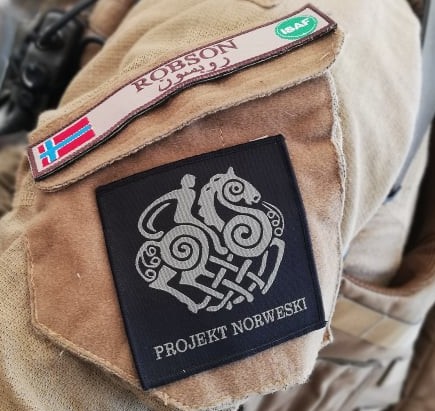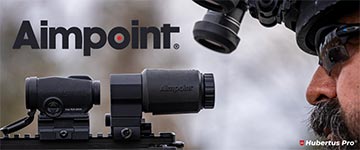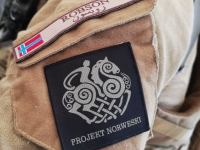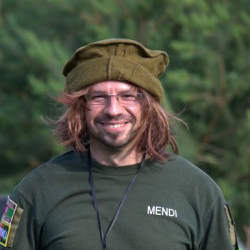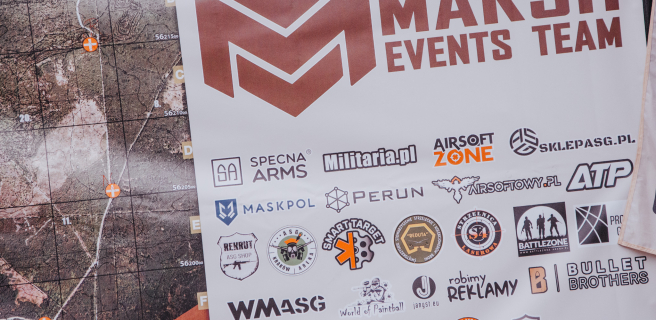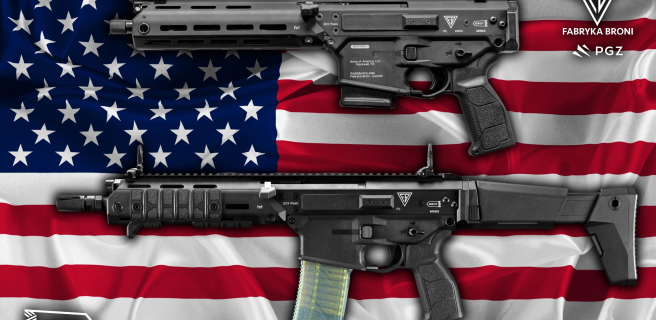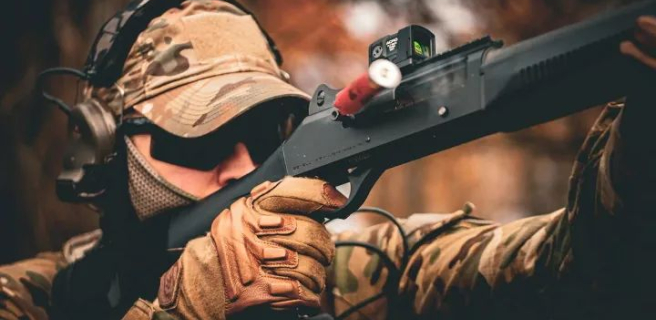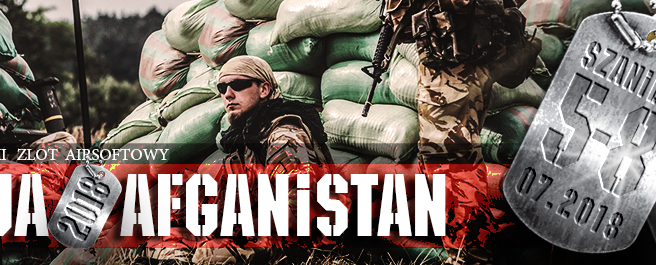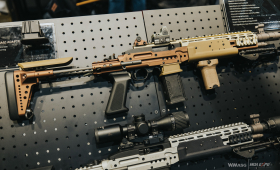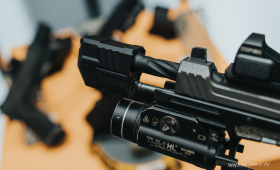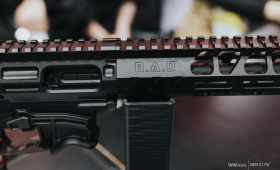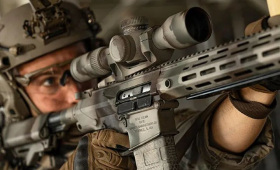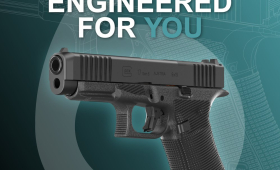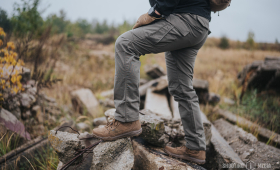I invite you to read the interview with Sebastian, a member of an airsoft team called "The Norwegian Project", which, as the name implies, deals with reenactment of the Norwegian Armed Forces.
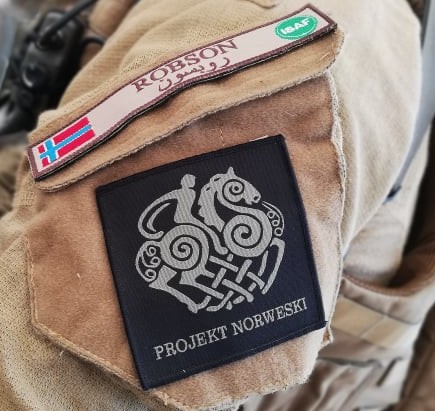
WMASG: Hello, Sebastian, do you have any nickname?
Sebastian: Yes– Marine. It is completely unrelated to the Norwegian theme, but I adopted it a decade ago and it has remained so.
WMASG: Where are you from?
Sebastian: The group is nationwide. Although most of us come from coastal regions (from Koszalin to the Tricity), in private life everyone went their own way. However, it is not an obstacle for us to meet from time to time and fulfill ourselves in our passion.
WMASG: How long have you been playing airsoft?
Sebastian: Some 8 years, the rest 11 and 12 years.
WMASG: Where did the idea for the reenacting a Norwegian unit come from and what exactly is this unit?
Sebastian: It all started in 2009, when I was able to get my first uniform in Norwegian camouflage. It was so intriguing that, together with the rest of the group I was in at the time, we decided to go deeper into the subject matter. It started with browsing photos, videos, reading articles using an online translator. In a short amount of time, each of us bought a uniform consisting of a smock jacket and pants. We made Combat shirts ourselves, based on the British coolmax T-shirt and NyCo material with Nkamo.
Initially, we did not want to do reenactment as we were based on a variety of equipment that we used for airsoft at the time. Only the uniforms were identical. But great interest in our "new spots" at airsoft events and the increasing availability of Norwegian equipment in Poland caused a refreshment of the group to be and the name was changed to "The Norwegian Project".
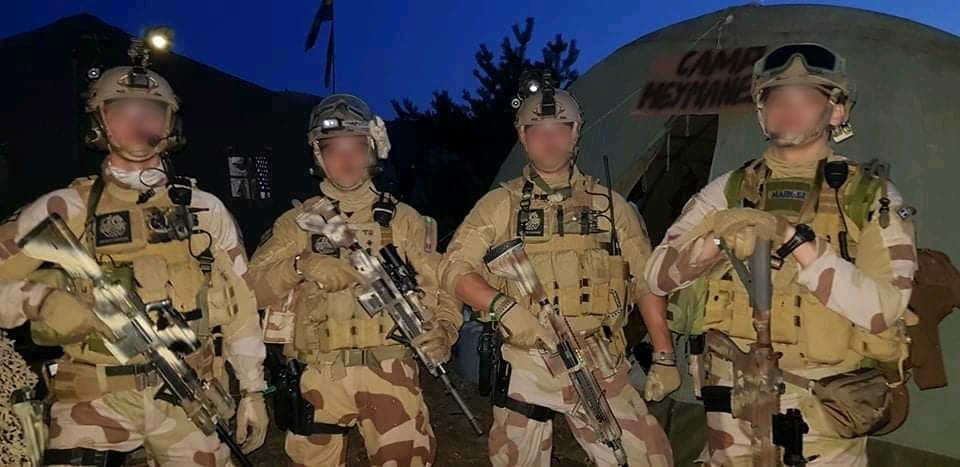
The group underwent reformation several times. For personal reasons of individual members the team almost ceased to exist for some time. Last year, we started off again with a fresh squad, this time without compromises and concessions. Our goal was to reenact the mechanized infantry of the Norwegian army called the "Telemark Battalion". It is one of the most elite units of the land forces in the Norwegian army.
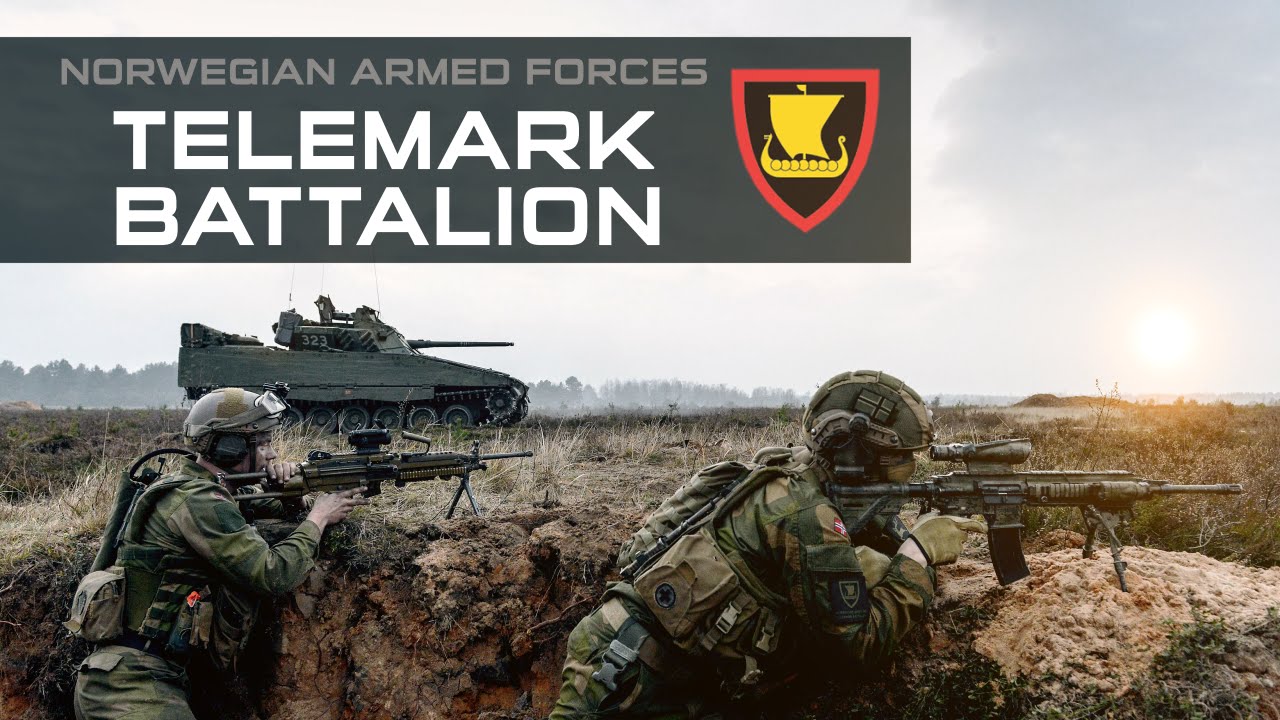
WMASG: The "new spots" you mentioned, do you mean the Norwegian camouflage?
Sebastian: Yes, it called Nkamo for short. This is the officially adopted, abbreviated name for a forest camouflage. Often confused, although I have no idea why, with the Swedish camouflage - and the differences between them are glaring and obvious at first glance. When it comes to Norwegian camouflage patterns, and there are several, them and you can see some official representation below.
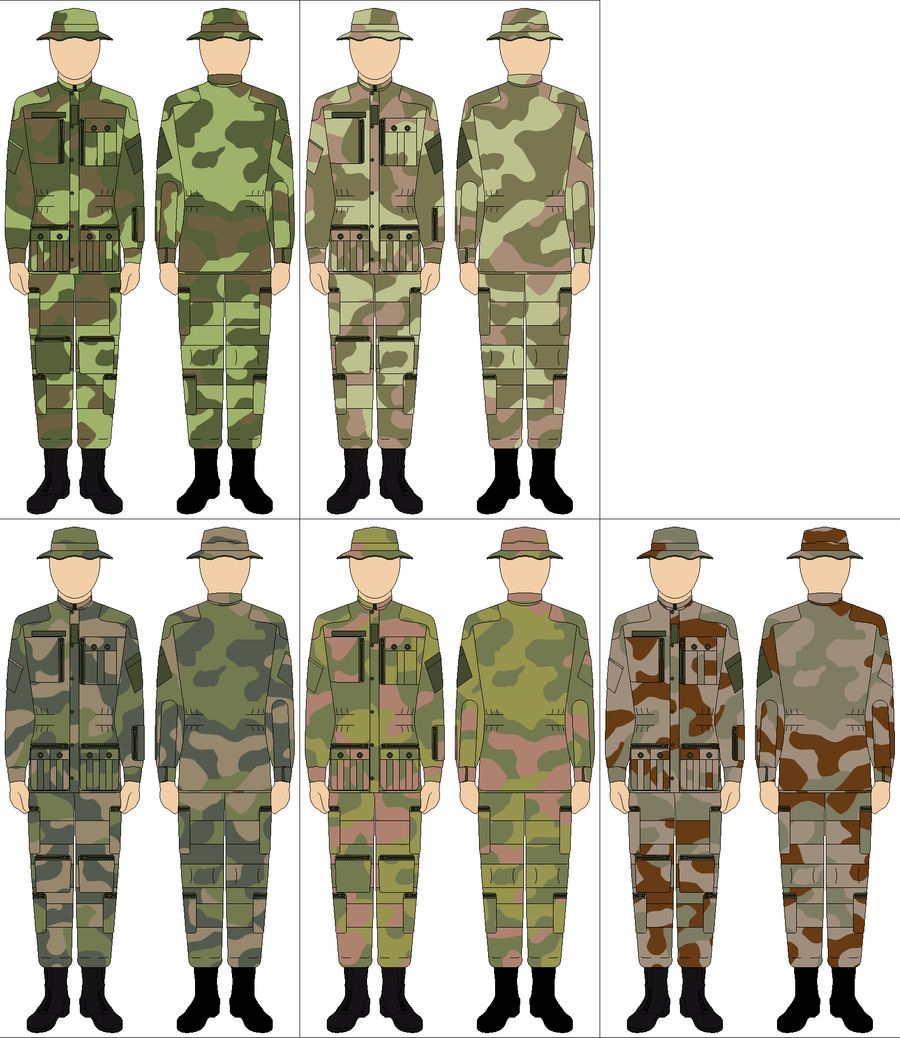
Patterns of Norwegian uniforms have similar designations as in e.g. the Polish army, like the wz.93 or wz.2010. They refer to the year in which they were designed or put into service.
In 1975, the Norwegian army received the M/75 uniform which was initially green, similar to the American M65 in terms of cut. Over the decade, the second generation of jackets was created in a new camouflage, which was the beginning of the current camo pattern. After 1983, uniform-colored jackets began to be withdrawn from service in favor of those in camouflage, trousers remained in olive or khaki (depending on the manufacturer and fabric). The M/75 uniform in the set, the Nkamo jacket and olive/khaki pants, is still used to this day by most units of the Norwegian National Guard.
In the early 1990s, work began on changing the camouflage, and more specifically its color scheme. The M/98 pattern introduced in 1998 was supplied as a shirt and pants in a much brighter color than the M/75. The effects this development were, unfortunately, very poor. According to the users the M/75 was too dark and the M/98 was too light for Scandinavian conditions. It wasn't until 2004 that the M/04 pattern was introduced with the BDU cut (which also appeared in the M/98) made from ripstop fabric. In addition, the desired camouflage colors were achieved, which is standard in the current M/17 pattern.
The desert uniform was introduced a year before the M/04, for the mission in Afghanistan, but the designation M/03 was not adopted. In terms of names, it was simply a desert uniform (ørkenkamo) and is currently characterized by brown-green patches on a beige background. It underwent experiments for several years in terms of color, cut, type of fabric, switching from brown and cream to brown and beige.
Standard issue uniforms came in many varieties from several manufacturers. They were NyCo mixes in ripstop, Twill 100% cotton or ultra-light, quick-drying tropical material soaked in permentin. For many years the standard for the army was a cut very similar to the BDU (Norwegian model M/04), but other uniforms were used interchangeably, using a RAID type cut or similar designs. I counted 16 designs of uniforms and different varieties from all manufacturers over almost two decades.
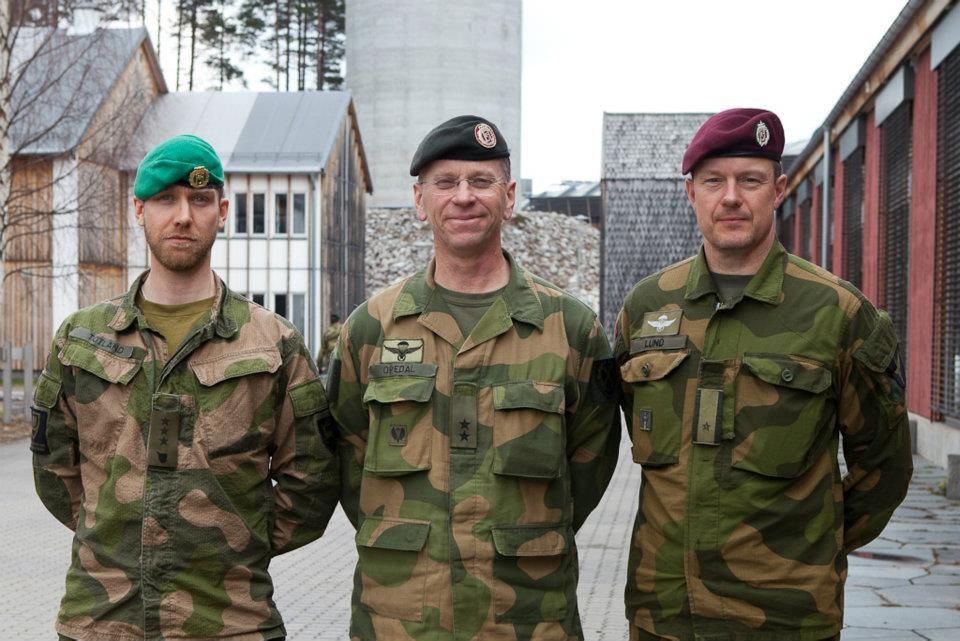
Manufacturers of these uniforms were most often Norwegian tailor companies (the flagship ones are Gullins and Cato Ringstad), but the shorts were made (and still are) on a large scale in Poland by NFM. The Swedish company Taiga, which supplies its products to the civilian market, also has a large share, supplying Norwegian special units with uniform sets.
As a curiosity I might add that since 2015, the Norwegian "research and development center" has been working on a new camo pattern, that would resemble Multicam Tropic combined with the current Nkamo color scheme and with additional black spots. However, it is not known when and whether the project will be adopted at all. Some of my friends, who have already seen the new pattern, are not very happy with the effect.
WMASG: Can you say more about the uniforms? I am talking about the user experience.
Sebastian: The colors of the Norwegian uniforms do well in Polish forests. Of course, there is no perfect solution, so it will not work in some places, but so far we have had no reason to complain about the colors or the camouflage pattern.
It is the same with general issue uniforms as in Poland which are manufactured on a large scale. They must be simple, neat, without unnecessary additions, comfortable to wear, properly finished, resistant to mechanical damage. So far, very worn or damaged clothes have not yet found their way in my collection considering the fact that the vast majority have undergone regular use during training and combat operations. In terms of comfort, there are no exceptions here. The more expensive the uniform, the better the solutions in terms of cut and material. When buying a Norwegian uniform, we can achieve the Arc'teryx or Helicon price range. It all depends on the amount of money or luck. More than once have I been able to buy items that are expensive in the catalog, but in reality were sold at production costs, even new ones, with tags.
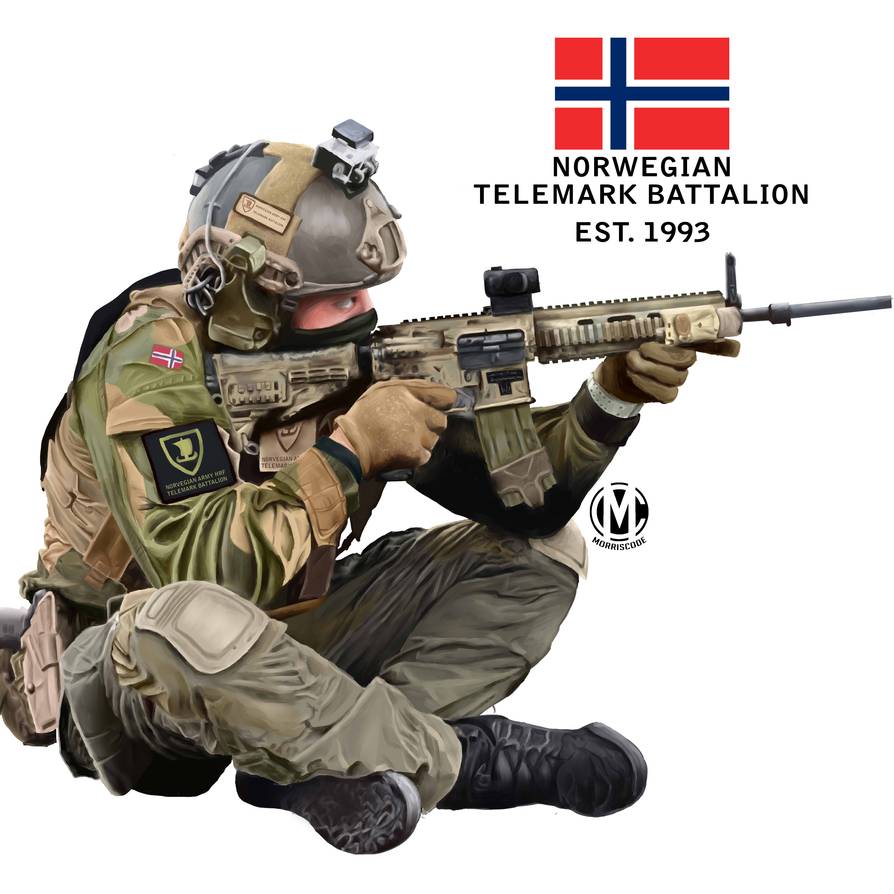
WMASG: What about other equipment ?
Sebastian: As far as the possibilities allow us, we try to gather and use equipment used by the Norwegian army (of course with the focus on reenacting the "Telemark Battalion"), based on photos found on the Internet. I can immodestly state that we have reached the right level of reenactment to make it look professional and in accordance with the Norwegian standard. Each of us already has at least two equipment carriers. One is the M07 integrated vest, which houses two large SAPI plates, two small plates and Kevlar inserts. In addition, lightweight vests model M10, similar to the FLC, called BEAR II MOLLE or Heidrun chest rigs.
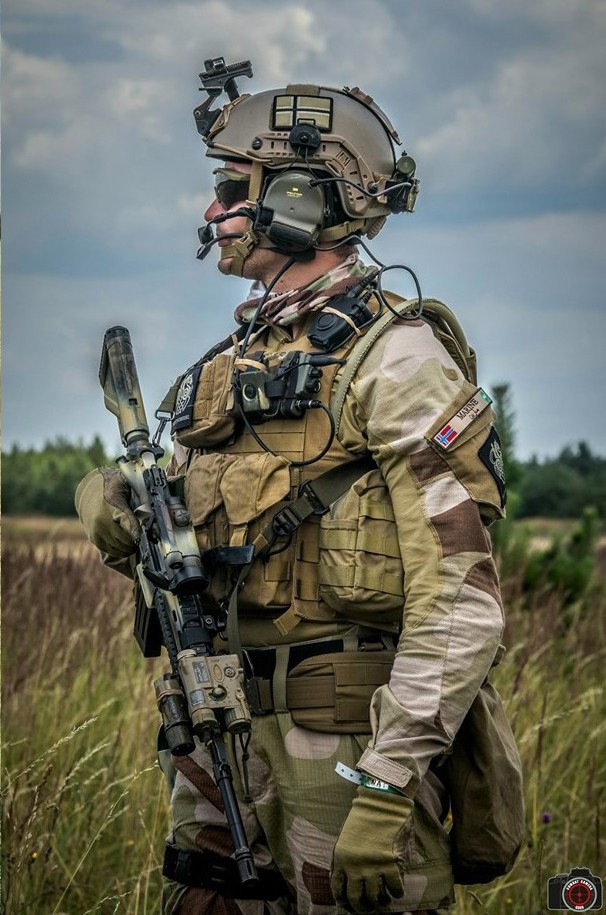
Vests, pouches and some uniforms are manufactured by NFM in Poland. Equipment used by the Norwegians can be bought directly in Norway. Basically anyone can do it by placing an order at the store. Some of the items supplied to the army are carefully designed: custom solutions were used (e.g. pouches for magazines closed with a hook and a nap), a completely new shape of the "soft" Kevlar ballistic inserts (somewhat similar to the BALCS) or a chestrig with an integrated administrative panel, internal, flat pockets for magazines and space for a plate on the front. A large percentage of this equipment, however, are duplicated designs that are proven, they work and do not need to be changed.
The equipmentbelow is modeled after the set used by a Norwegian NCO, serving in the "Telemark Battalion". It gives us a lot of substantive support.
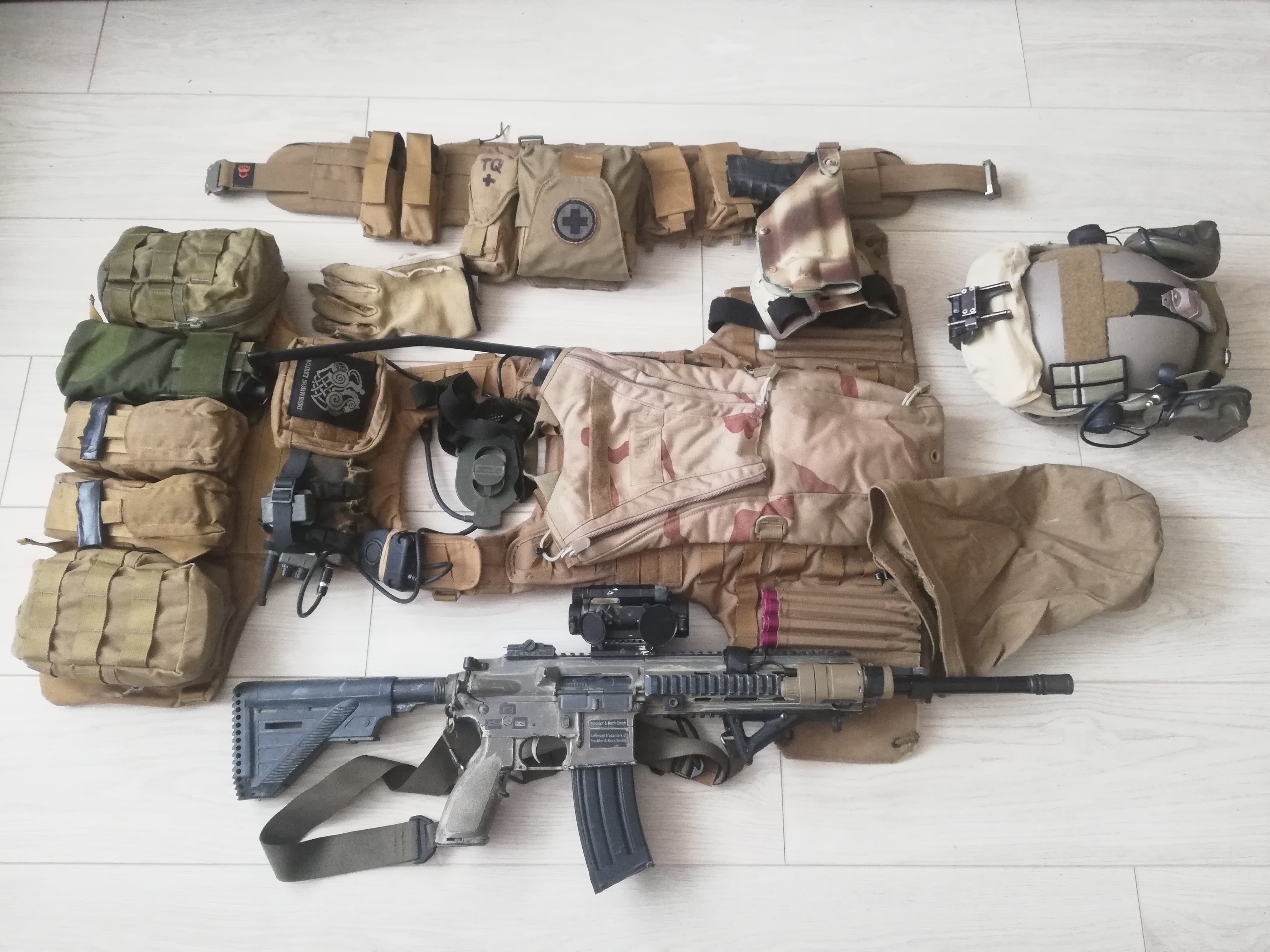
WMASG: Where do you get your equipment?
Sebastian: There is no rule. Over the past few years, we got a large number of uniforms and equipment in Poland, as the company supplying the Norwegian army has its production plant in our country. And if something is not here, then we get it from Norway, from military stores or from colleagues from friendly groups. Some items also came to us from the USA, Spain or France. It is not easy, nor is it available in quantity like German, British or American equipment, but you can get it.
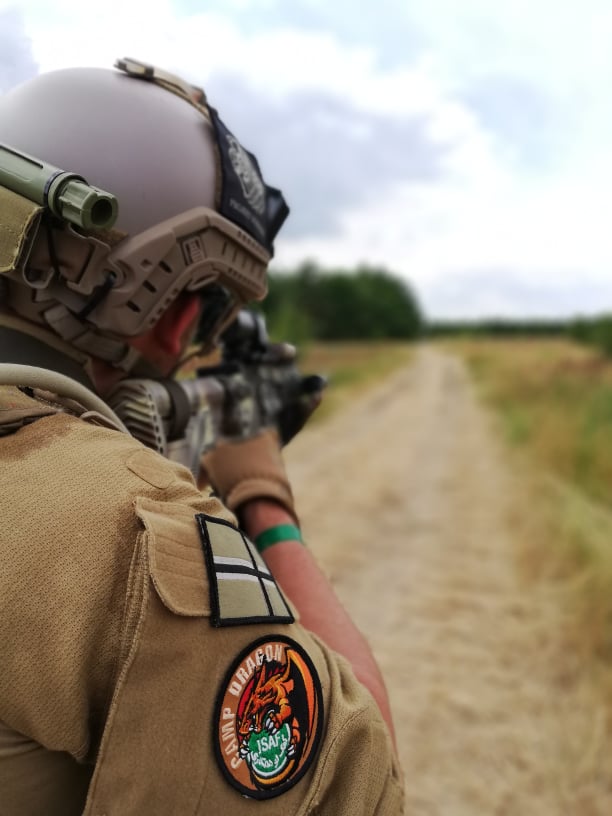
WMASG: What events do you go to?
Sebastian: There were not many so far. We are still looking for events we would like to go to and try new ones. This year, we visited "Mission Afghanistan" for the first time which, for us, was an interesting variety on the LARP theme.
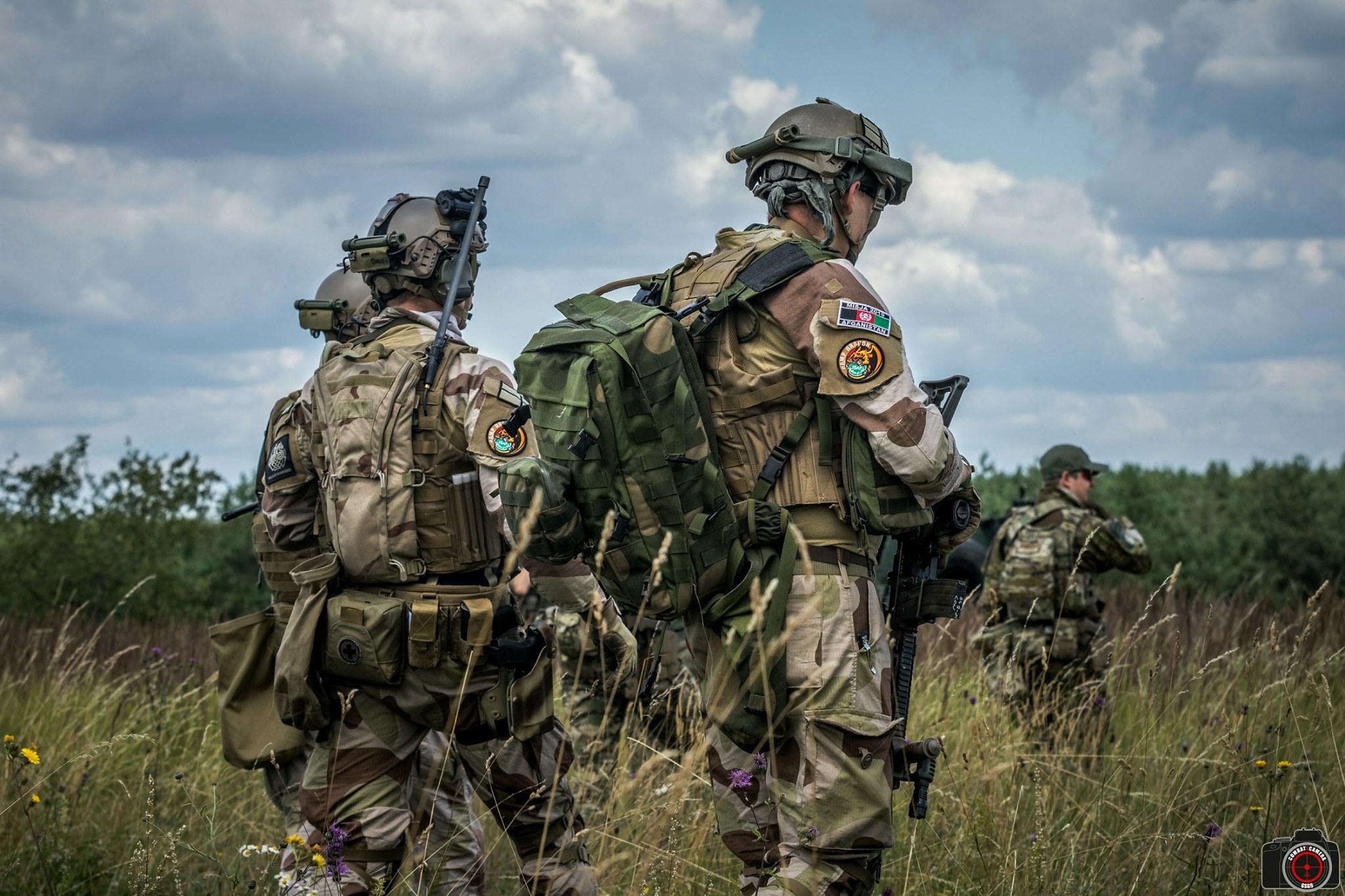
In 2018, we visited the Swedish "Berget" - a week long trip to the north long after the event ended, guaranteed we had fond memories of it. I encourage you to see our video report: https://www.youtube.com/watch?v=jXCUf37o79k
In addition to Sunday games, where you can meet individual members of the group in places like Szczecin, Tri-City, Warsaw and Olsztyn, we focus on MILSIM games such as AEGIS, Black Ops, and CSAR. We would like "Mission Afghanistan" to become our flagship event. There we can most closely re-create the activities of Norwegian troops from a few years ago in the most appropriate way, i.e. under the PRT. In addition to trips to organized events, we go for endurance marches ourselves with are focused on living in the wild.
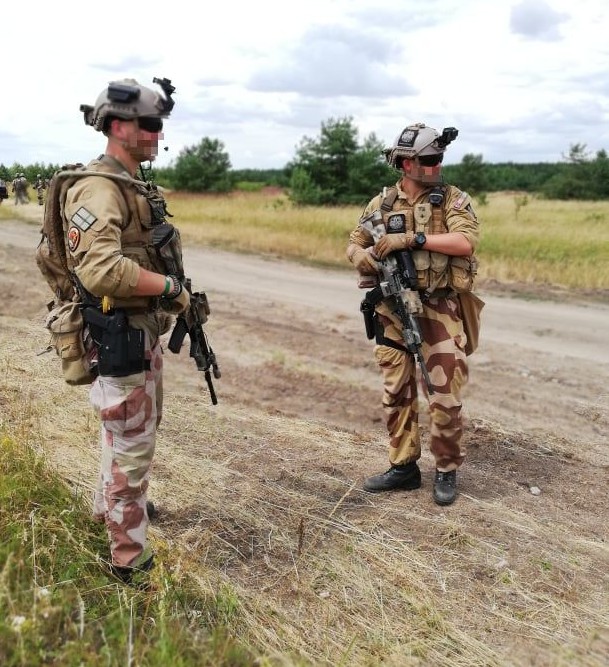
We are of course open to any events, not only airsoft, but also reenactments and military vehicles rallies.
WMASG: Why can't we see the faces of your team members in the photos?
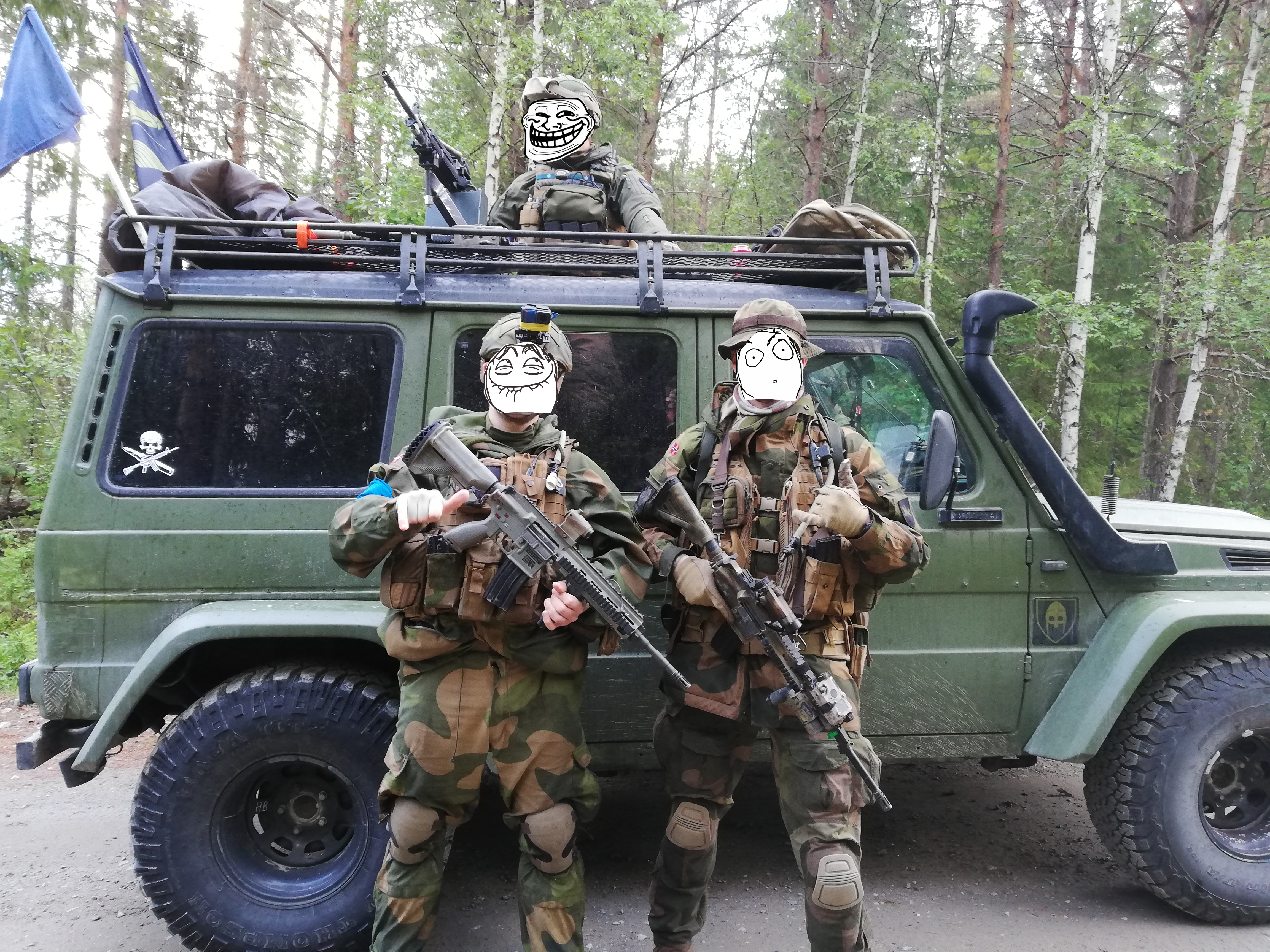
Sebastian: In social media, we put incognito photos on group profile, with blurred faces. It is not about being like the "special forces", because none of us is or will be a member of such, but we think that those photos add some sort of uncertainty and intrigue. And some of us have reasons to hide their identity with a few pixels. Given the Norwegian army - a good portion of the "Telemark Battalion" soldiers keep their image hidden. We can also say that we empathize with the subject of reenacting the unit.
WMASG (Mendi): Thank you very much for the interview. I would just like to wish you successful events and good fun in continuing your hobby. See you in my sights.
Facebook profile: https://www.facebook.com/projektnorweski/

